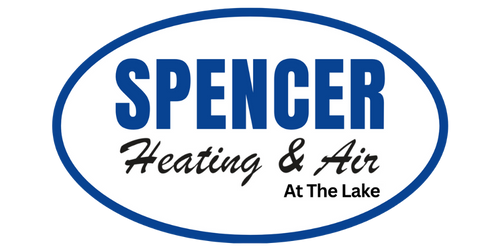8 Smart Ways to Care for Your Lake Martin House This Summer
Spending your summer at your Lake Martin retreat should be all about relaxing — not worrying about maintenance or indoor air problems. But lakeside living brings its own set of challenges: high humidity, seasonal allergens, and wear and tear from being near the water. With the right upkeep, you can keep your lake house comfortable, energy efficient, and healthy all season long.
Here are eight essential tips to take care of your lake house in summer, focusing on both comfort and air quality.
1. Tune Up Your HVAC Before Peak Season
One of the most important tasks for summer is making sure your air conditioning system is up to the challenge.
- Change filters regularly. Replace your HVAC filters every 1–3 months, depending on how often the house is used. Dirty filters reduce airflow, lower efficiency, and worsen indoor air quality.
- Schedule professional maintenance. Have a trained technician check your condensers, refrigerant, coils, and drainage to make sure your system runs efficiently and safely.
- Inspect ductwork. Dust, pollen, and even mold spores can build up in ducts. A clean duct system helps improve airflow and reduces allergens.
A well-maintained HVAC system keeps your lake house cool while protecting your indoor air.
2. Manage Humidity to Prevent Mold and Mildew
High humidity is very common in lake-area homes. Left unchecked, it can lead to moisture problems, musty odors, and even mold growth.
- Use a dehumidifier. Especially in enclosed or less-ventilated areas, a good dehumidifier can help maintain indoor humidity levels between 30–50%.
- Ventilate properly. Run exhaust fans in bathrooms and kitchens during and after use to remove excess moisture from showers and cooking.
- Seal leaks. Check windows, doors, and any exterior gaps, and apply weather-stripping or caulk to stop humid air from infiltrating.
Keeping humidity under control not only protects your structure — it also improves air quality.
3. Clean Vents, Registers, and Return Air Paths
When you’ve shut down or lightly used your lake house during the off-season, dust and debris probably settled in your vents and returns.
- Deep-clean registers. Remove and wash vent covers, then vacuum inside to clear out buildup.
- Check return air grilles. Make sure return pathways aren’t blocked by furniture or storage — good airflow is critical for efficient cooling.
- Consider duct cleaning. If it’s been a while, professional duct cleaning can remove collected pollen, pet dander, and other contaminants.
Clean ductwork helps your HVAC system breathe freely, improving performance and the breathing air in your home.
4. Use Ceiling Fans and Optimize Airflow
Fans are energy-efficient tools to keep air moving and reduce the workload on your air conditioner.
- Set fans counterclockwise. In summer, that direction pushes cool air downward, making rooms feel more comfortable.
- Keep furniture clear of vents. Make sure large items like sofas or cabinets don’t block supply vents or return pathways.
- Use portable fans. Box fans or standing fans can enhance airflow in common areas, especially when the house is full of guests.
Improved air circulation makes the space feel cooler without having to crank down the thermostat too much.
5. Control Moisture Around the Lake House
Lakeside properties are more exposed to moisture — not just inside, but outside too. That means being proactive about barriers and drainage.
- Inspect gutters and downspouts. Clean out debris so rainwater doesn’t pool around your foundation or siding.
- Seal exterior cracks. Caulk or flash around windows, doors, and any exposed joints to prevent water infiltration and reduce humid air enters.
- Protect outdoor AC unit. Clear away leaves, branches, and other debris from around the condenser so it can operate efficiently.
Controlling moisture outside reduces the risk of mold and structural damage inside.
6. Keep Surfaces Clean and Dust-Free
Dust and allergens often spike in summer — especially in a vacation home where maintenance may be irregular. Prioritize keeping soft surfaces and fabrics clean.
- Deep-clean upholstery and rugs. Vacuum or steam-clean furniture, rugs, and carpets to remove allergens like dust mites and pollen.
- Wash bedding frequently. Especially if many people are staying, wash linens weekly in hot water to minimize allergen buildup.
- Reduce clutter. Use closed storage for seasonal items, lake gear, and other belongings so dust isn’t constantly accumulating.
A cleaner interior contributes to healthier indoor air and a more relaxing environment.
7. Ensure Good Ventilation in High-Moisture Rooms
Rooms that generate moisture — like bathrooms and kitchens — need special attention to air flow.
- Install or run exhaust fans. After showers or cooking, run the fan for 10–15 minutes to push moisture outside.
- Open windows wisely. During cooler morning or evening hours, open windows to let fresh air in and push stale air out.
- Monitor humidity. Use a hygrometer in sensitive areas (like basements or crawl spaces) to make sure moisture stays in check.
Better ventilation minimizes the chance of mold and makes your lake house feel fresher.
8. Inspect Safety, Systems & Supplies Before Peak Use
Before the busiest season hits, take a few extra steps to verify that safety systems are functioning and you’re stocked for summer.
- Check smoke and CO detectors. Make sure your alarms work and replace batteries.
- Replace or service dehumidifiers. Empty collection trays, and clean filters so they’re ready when humid air hits.
- Stock up on essentials. Replenish first-aid kits, fire extinguishers, cleaning supplies, and other items you’ll use during frequent summer stays.
- Inspect the roof and siding. Look for early signs of damage — cracked shingles, loose siding, or mildew — and make repairs before they worsen.
These preventive checks help you avoid emergencies and keep your getaway safe and stress-free.
Frequently Asked Questions About Lake House Summer Care
Here are some common voice-friendly questions and quick answers to help homeowners prepare:
Q: How often should I change my AC filter in a lake house?
A: Change the filter every 1 to 3 months, depending on how much you use the system. Homes near the lake may need more frequent changes due to pollen and dust.
Q: What humidity level is ideal in a lake house?
A: Aim for 30–50% relative humidity. This helps prevent mold and keeps indoor air comfortable.
Q: Should I run my ceiling fan even when the AC is on?
A: Yes — ceiling fans help distribute cool air, reduce how hard your AC needs to work, and improve airflow.
Q: How do I prevent mold in a lake house during summer?
A: Use a dehumidifier, run exhaust fans after showers or cooking, seal any leaks, and keep ventilation strong.
Q: Is duct cleaning worth it for summer air quality?
A: Definitely. Cleaning ducts removes dust, pollen, and mold spores that can circulate when your AC runs.
Q: What should I check outside to protect my lake house from summer storms?
A: Inspect gutters, seal cracks, clear around your AC unit, and check your roof for damage. These steps help prevent water damage and moisture intrusion.
Why Summer Maintenance Matters for Lake Martin Homes
- Humidity control protects your home: Lakeside homes are particularly susceptible to moisture, which can lead to mold growth, wood rot, and musty smells.
- Better air quality improves health: Clean ducts, fresh filters, and proper airflow reduce allergens, dust, and airborne irritants.
- Energy savings: When your system is well-maintained, it runs more efficiently — which saves you money and energy.
- Longer HVAC lifespan: Routine tune-ups prevent breakdowns and extend the life of your air conditioning unit.
- Stress-free summer stays: Proactive maintenance means fewer surprises when friends and family arrive for a lake weekend.
Contact Us
For more than 50 years, our factory-trained comfort specialists and technicians have helped to keep your home comfortable! Spencer at the Lake is a trusted American Standard Heating & Air Conditioning Customer Care Dealer in the Lake Martin area. Call us at (256) 373-3165 for more information, or follow us on Facebook and Instagram for the latest updates and tips.



